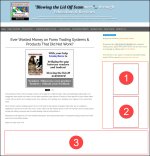- Home
- Girvan Lambert
- The New York Breakout – Take Advantage of the Increased Market Volatility
The New York Breakout – Take Advantage of the Increased Market Volatility
by Girvan Lambert
(Canada)
With increased market volatility comes the increased likelihood of price action breakouts, which always come bearing opportunities for savvy investors. The New York Breakout system is one based on exploiting such conditions. How exactly does it achieve that goal? It is aimed at taking advantage of the start of the New York trading session, which happens to overlap for a brief period of time with the London trading session, thus resulting in a period of maximum volatility. Because the good-old greenback is the most traded currency during this period (which resumes to 13:00-15:00 GMT), it makes perfect sense to focus this system on currency pairs involving the USD, although it should theoretically work for something like the EUR/GBP too. As said above, the New York Breakout is based on the prediction of price breakouts, which – when correctly identified – make the trading of the Touch/No Touch and Put/Call contracts a piece of cake.
Take a look at binaryoptionsfree.com, if you’re interested in free binary options and in putting your systems/theories to the test, risk-free.
In order to set up the system (we’ll use the MT4 platform), we will need a bunch of indicators, more precisely 4 of them. Two of these are built into MT4, but the other 2 need to be acquired separately. I’m talking about the ant-GUBreakout and the i-ParamonWorkTime indicator, which – as far as I know – can be acquired for free too, in exchange for signing up to certain sites. The other indicator-related issue is that because of the time-frame-focused nature of the system, traders will have to set them properly before they can use them. Essentially, they have to account for the time-difference from GMT of the location where they are. The way to do that is through the Custom Indicator window, where under the Input tab, there’s a field called “GMT shift of your broker” where the accurate time-difference should be entered. This way, the indicators will include all the time-difference related calculations automatically.
The first step in the actual application of the strategy is to open up a 15 min EUR/USD chart (it can of course be any other chart involving the USD, and it has to be a 15 minute one because that’s the time frame we use for the analysis). Then apply the i-ParamonWorkTime indicator, which will effectively delimit the time-frame we need for the purposes of this strategy, through the use of two vertical lines. It will also shade the area of interest so it’s easier to keep an eye on. This procedure can be done manually too, through the use of the vertical line tool, but that way, one leaves him/herself more open to error, especially because all calculations relating to the GMT time difference have to be done manually.
The next step is to trace two horizontal lines, one at the highest candlestick within the shaded area, and one at the lowest. From here on out, the trader needs to be on the lookout for a price breakout, which in this case is defined as the price crossing one of the two horizontal trend lines.
If there is a breakout (let’s consider an upward one for the sake of the example), a Call contract has to be purchased, with a 30 min expiry. If the price breaks out downward (through the lower trend-line) a Put trade should be purchased, also with a 30 minute expiry.
The trading of the Touch/No Touch contracts is also quite easy: If the price breaks the upper trend-line, a No Touch trade is in order, 30 pips below the lower trend line, featuring a 30 minute expiry. The Touch trade should be placed 30 pips above the high trend-line, but this time, the expiry has to be set to 24 hours.
If there’s a downward price breakout, the trades are made in a similar manner, with the obvious adjustments required by the situation.
Return to Girvan Lambert's Articles.





